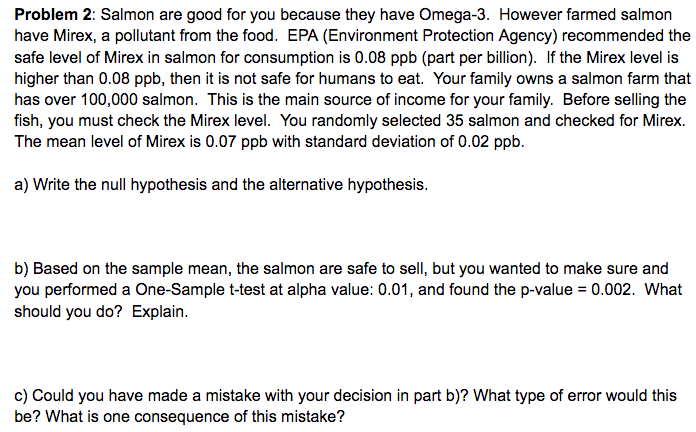a) Write the null hypothesis and the alternative hypothesis. b) Based on the sample mean, the salmon are safe to sell, but you wanted to make sure and you performed a One-Sample t-test at alpha value: 0.01, and found the p-value = 0.002. What should you do? Explain. c) Could you have made a mistake with your decision in part b)? What type of error would this be? What is one consequence of this mistake?
Addition Rule of Probability
It simply refers to the likelihood of an event taking place whenever the occurrence of an event is uncertain. The probability of a single event can be calculated by dividing the number of successful trials of that event by the total number of trials.
Expected Value
When a large number of trials are performed for any random variable ‘X’, the predicted result is most likely the mean of all the outcomes for the random variable and it is known as expected value also known as expectation. The expected value, also known as the expectation, is denoted by: E(X).
Probability Distributions
Understanding probability is necessary to know the probability distributions. In statistics, probability is how the uncertainty of an event is measured. This event can be anything. The most common examples include tossing a coin, rolling a die, or choosing a card. Each of these events has multiple possibilities. Every such possibility is measured with the help of probability. To be more precise, the probability is used for calculating the occurrence of events that may or may not happen. Probability does not give sure results. Unless the probability of any event is 1, the different outcomes may or may not happen in real life, regardless of how less or how more their probability is.
Basic Probability
The simple definition of probability it is a chance of the occurrence of an event. It is defined in numerical form and the probability value is between 0 to 1. The probability value 0 indicates that there is no chance of that event occurring and the probability value 1 indicates that the event will occur. Sum of the probability value must be 1. The probability value is never a negative number. If it happens, then recheck the calculation.
Can I get some explanation on problem 2 A-C

The provided sample mean is and the sample standard deviation is , and the sample size is .
a) As per the problem described, Null and Alternative Hypotheses are :
The following null and alternative hypotheses need to be tested:
Ho: ≤ (The salmon is safe for humans to eat as the Mirex level is less than or equal to safe level of 0.08)
Ha: > (The salmon is not safe for humans to eat as the Mirex level is more than safe level of 0.08)
Step by step
Solved in 2 steps


